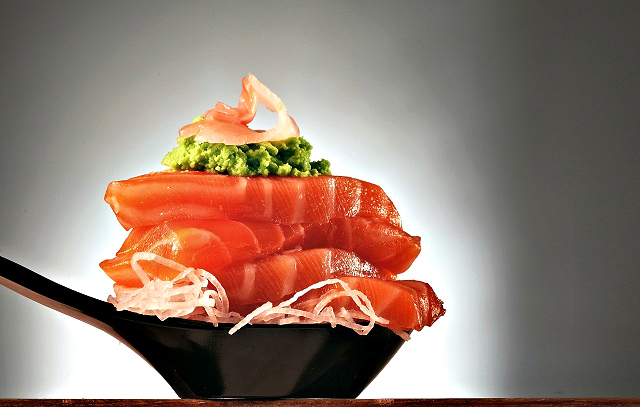There’s a difference between raw salmon and salmon sashimi. salmon used for sashimi has been “super frozen” at minus 40 deg C.
The process kills parasitic worms that fish are host to but doesn’t break down the flesh, so the meat remains fresh.
In other words, don’t DIY sashimi. Salmon that you buy from your friendly fishmonger or neighbourhood supermarket may not be safe to eat raw.
Love your sashimi? You’d do well to stick to salmon.
A study published in the Journal Of Risk Research found tuna sashimi – among fish sushi – to contain the highest levels of methylmercury.
Exposure to the substance through excessive fish consumption can result in poorer brain function and increase your risk of cardiovascular diseases – effectively cancelling the positive effects of omega-3 fatty acids, which are known to reduce cholesterol levels, blood pressure, risk of some cancers and incidence of heart disease.
The researchers noted that sushi made with eel, crab, salmon and kelp were found to have lower levels of methylmercury.
When it comes to topping up after training, salmon sashimi hugely overshadows the equally popular tuna plate.
Every 100g of raw salmon serves up 2,018mg of omega-3s compared to tuna’s paltry 243mg.
These fatty acids help keep your inflammation low, says a study in the European Journal Of Clinical Nutrition, which will make training recovery swimmingly speedy.
Plus, research from Japan suggests that eating sushi regularly can halve your risk of lung cancer.

